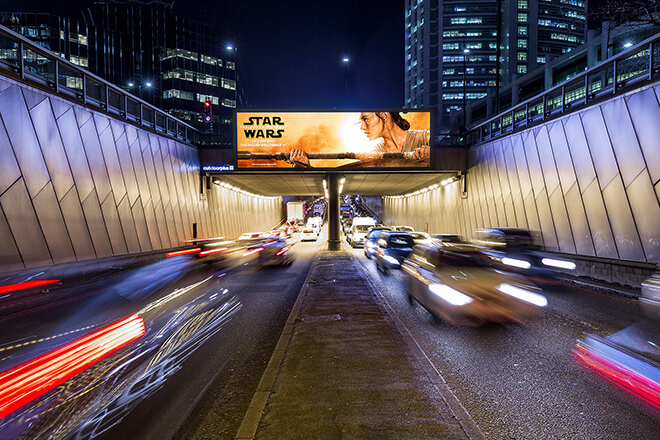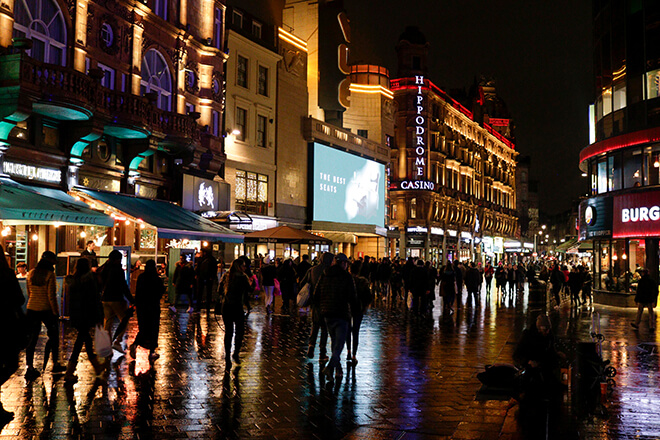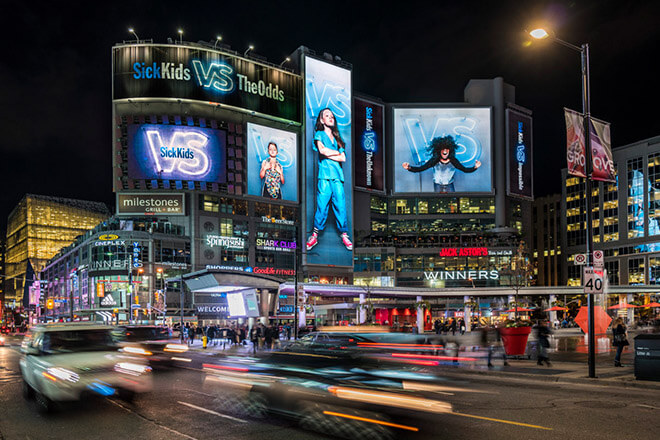
What exactly is light pollution in LED displays?
What is light pollution? Perhaps it’s when you look up at night and don’t see the familiar stars and Milky Way.
Light pollution is a type of environmental pollution that affects the natural environment and has a negative impact on people’s normal lives, work, rest, and recreation.
Every part of the city now uses LED screens on a large scale, and they have developed into distinctive symbol that improves the city’s reputation. On the one hand, LED displays enhance the appearance of the city, but on the other, the intense light from the screen also has a somewhat detrimental effect on the city dwellers’ nightlife. The LED business may be a “luminous” one, and it makes sense that displays would be “luminous,” but according to the city’s environmental pollution indicators, it has developed into a new kind of pollution.
Therefore, during manufacturing, LED screen manufacturers should be aware of the “light pollution” issue.

Why do LED screens cause light pollution?
· Self reasons
The LED display has high brightness characteristics. In the dark, if the display’s brightness output reaches 8000 cd/m2, it will cause significant light interference.
Here’s a brief guide on light interference, which is classified into two types: direct and indirect. The former refers to the decrease in visual resolution caused by illuminants with higher brightness in the field of view, and the latter refers to the fact that illuminants do not appear directly. However, the light projected on the surface of the object reflects and enters the human eye, causing issues.
· Geographical factors
The severity of the interference light will increase with the observer’s proximity to the display, the angle at which they are positioned in relation to it, or the similarity between their eye’s direction and the display’s position.
· Reasons for brightness
Between day and night, there is a noticeable change in ambient lighting. Due to this, various periods of time and the same brightness LED display will result in varying degrees of the interference light.
· Observer reason
Observers of different ages, occupations, health statuses, and psychological moods, will experience different degrees of the interference light. Observers who are frequently exposed to sensitizers or who have eye conditions, for instance, may be more susceptible to light.
· Content display is different
An observer may become uncomfortable if the image content on the display screen changes too rapidly. A color’s luminosity that is either too high or too blunt can irritate the human eye.
· Standards for evaluation
The use of display screens is widespread, including in commercial, residential, and locations with heavy traffic. The site’s unique characteristics also affect the evaluation standards for interference light.
· Environment
The interference light on the screen will be significantly influenced by environmental factors. People’s views of interference light displays will be impacted by harsh outdoor factors like haze, rain, wind, and other weather. Human eyes will lead to inaccurate judgment standards and affect the objectivity of judgment under the influence of external variables.

After finding the cause of light pollution, we will prescribe the right medicine to solve the problem of light pollution on LED display screens.
· Adopt a self-adjusting brightness adjustment system
The outdoor brightness acquisition system can continuously collect environmental brightness data, and then the software of the screen display control system can automatically calculate the appropriate screen brightness based on these data and adjust it.
· Multi-level grayscale correction technology
The control system of the ordinary LED screen has a color depth of 8bit, which makes the low-gray color and the color transition area look soft enough, which will cause the color light to be out of adjustment. The new LED large-screen control system, however, makes use of 14-bit color display levels, which significantly enhances the hardness of colors and prevents people from feeling uncomfortable around light. To find out more about grayscale for LED screens, get in touch with BIBILED.
· Appropriate installation site and reasonable area planning
According to the relationship between viewing distance, viewing angle, and screen area, an experience-oriented solution can be determined. BIBILED can tailor-make for you according to the actual situation, and meet your requirements as much as possible.
· Content selection and design
As a kind of public media, the LED screen is mainly used to display public service announcements, advertisements, instructions, and other information. We should screen content that meets the needs of the public and attract everyone’s attention, which is also an important aspect of light pollution control.
· Current brightness adjustment standards
To improve light pollution control, relevant agencies should publish standards for adjusting the brightness of LED displays. It is necessary for the LED screen owner to actively adjust the display’s brightness output in accordance with the ambient brightness; it is strictly prohibited to output high brightness during the darkest hours of the night.
· Reduce blue light output
Manufacturers should reduce blue light output while ensuring the display function of the screen to avoid damage to human eyes.
· Light distribution control
A sensible setup of the screen’s light is necessary for the effective management of light pollution produced by LED displays. The light produced by the LED screen needs to be spread evenly throughout the field of vision to prevent harsh lighting in close-proximity regions. During production, there must be tight limitations on the size and direction of lighting.
· Label safety precautions in multiple directions
Safety precautions should be marked on the instruction manual of LED display products, focusing on adjusting the brightness of the screen correctly and the possible harm caused by staring at the LED screen for a long time.
· Improve product performance and quality
Strengthened testing of product brightness in both indoor and outdoor settings is required to guarantee the performance of LED display products. Testers must wear dark sunglasses with a brightness attenuation of 2 to 4 ti during the interior procedure, and they must carefully examine the display to see if there are any details.

Conclusion
LED screens will unavoidably cause light safety and light pollution issues while in use. In order to successfully prevent the harm that an LED display may cause to the human body, we should take reasonable and practical steps to eliminate the light pollution that the LED display is responsible for.
